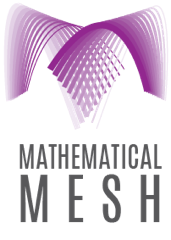
Our Devices, Our Control
Taking control of our Devices
In theory, the Internet of Things (IoT) is supposed to allow people to take control of their environment by making all the every-day appliances they use capable of communicating and interacting to create a ‘smart’ environment.
In practice, this techno-utopian dream means every user becomes a full-time system and network administrator of their ‘smart-home’ and every interaction is through a vendor provided ‘app’ mediated by a vendor provided service.
The current approach to IoT has failed to drive mass adoption in any area. ‘Smart lighting’ has been available for over 20 years, but it hasn’t become a standard feature in newly built homes. Instead of making our devices ‘smart’, IoT has merely added the ability to control them remotely from a mobile phone.
In the vendor driven IoT architecture, each device connects to a user account at cloud service provided by the vendor. The user may then control their IoT device connected to the cloud service through their mobile device connected to the cloud service. This approach is easy to build and provides the vendor with the opportunity to collect an ongoing rent for each IoT device in service. But this architecture only provides the end-user with the limited set of functionality offered by the IoT vendor. None of the existing platforms provide the deep level integration between IoT devices that a true ‘smart’ environment demands.
In a true ‘smart home’ environment, I tell my car I am driving home and the heating system is instructed to turn itself on at the correct time to get the house at the correct temperature on arrival. And when I do arrive, the garage door opens, the lights come on and the house home entertainment continues the music I was playing in the car.
While this level of integration is possible in theory using the current vendor directed architecture, realizing it would require a multi-year integration effort. In my home, every one of the devices in that system comes from a separate vendor. And while there are numerous alliances and software specifications that provide these capabilities in theory, they attempt to realize that goal by establishing bridges and interconnections between vendor provided cloud services and not between the devices themselves.
Many IoT vendors today have yet to realize that many homes are shared spaces and they are frequently shared for
This approach is unsustainable. The enthusiasm and goodwill of early adopters has been carelessly consumed as customers who paid good money for a ‘Smart’ device find that the smart features have been disabled because the cloud service has been discontinued.
User Driven IoT Architecture
If IoT is going to succeed, we need an architecture that meets the needs of users, not the maximal business model of IoT vendors. Instead of IoT devices connecting to an account provided by the vendor, Mesh IoT devices connect to an account that belongs to the device owner.
Every Mesh connected IoT is provisioned with a set of public key pairs and credentials allowing it to securely interact with any other device connected to the same account.
Connecting Devices
Connecting a device to a Mesh account and configuring it for use can be as easy as scanning a QR code printed on the device itself. The connecting device is provisioned with:
The address of the Mesh account and Mesh Service Provider to connect to.
The public key pairs and credentials allowing it to connect to the Mesh Service Provider and securely interact with any other device connected to the Mesh account.
The configuration data required to connect to one or more local wireless networks.
Any configuration data required to perform the device’s assigned function.
Smart Home Deployment
Since homes are shared spaces, in a smart home scenario it is best to create an account for each home and connect the devices to the account. This allows the appropriate access rights to be granted to inhabitants as they join and leave the space. Placing the Mesh Service Provider for the connected devices inside the home itself allows all the devices to continue working without loss of functionality even in the case that network connectivity is lost.
